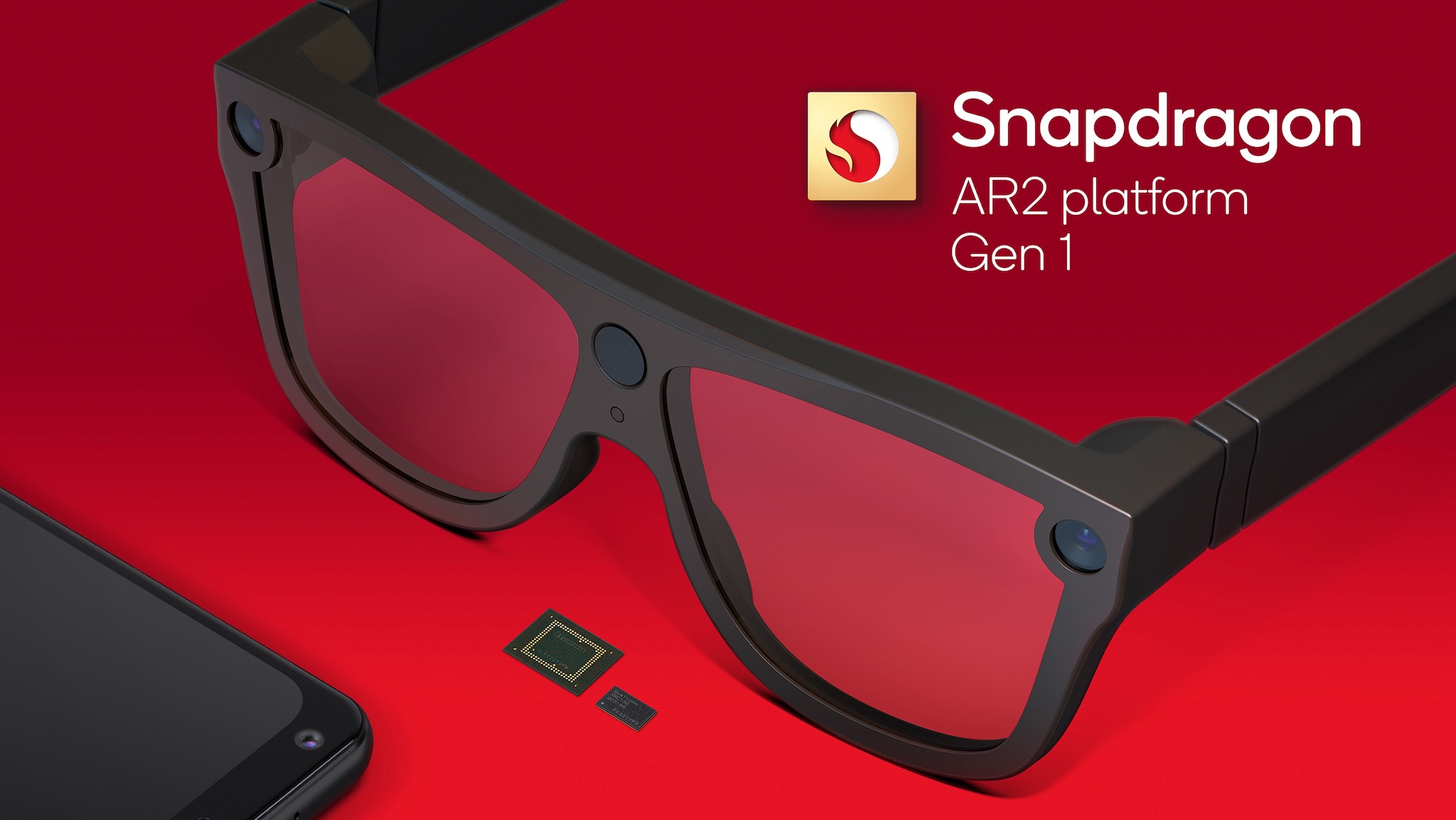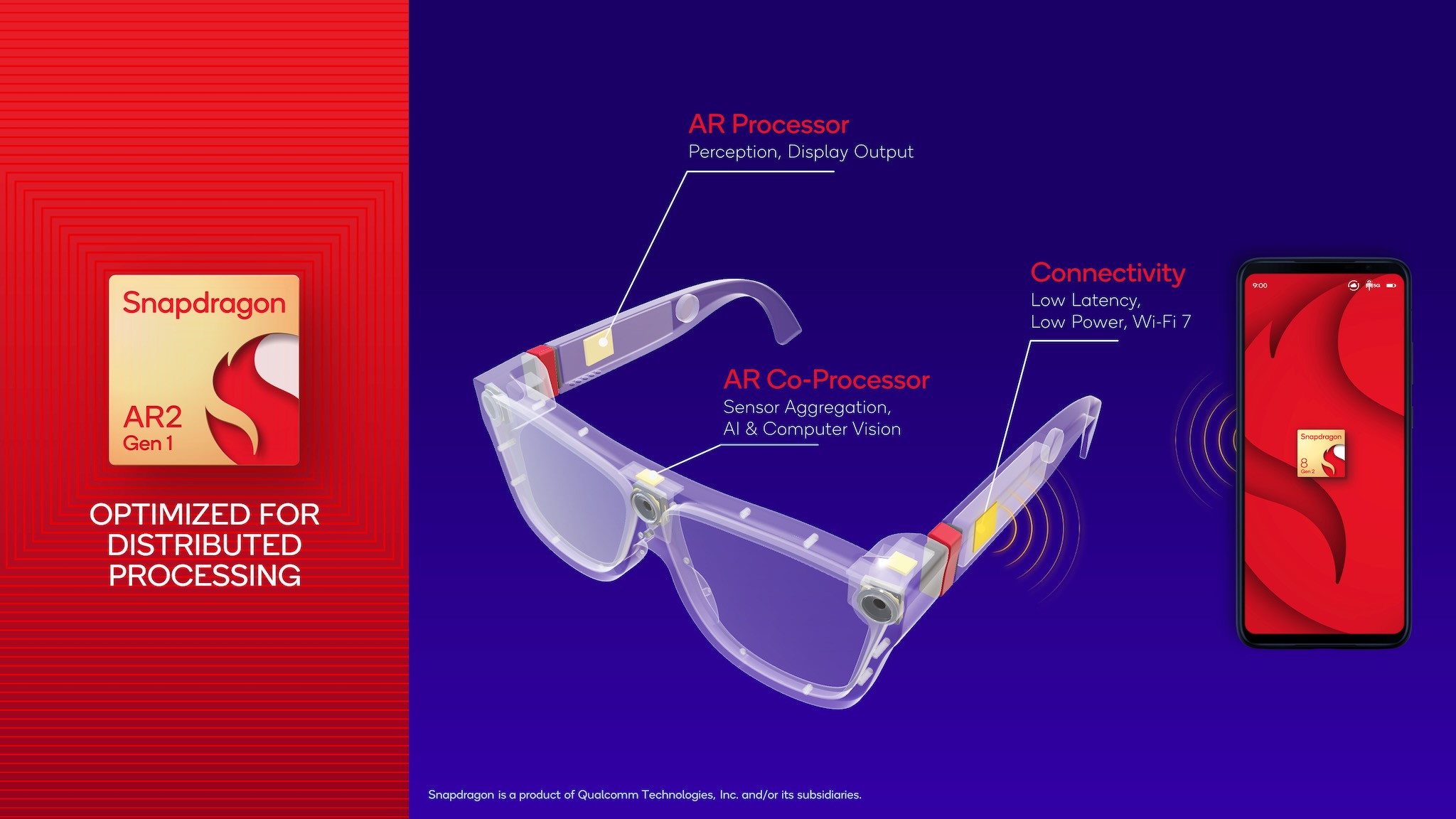Snapdragon AR2 is designed to make compact wireless AR glasses possible
Most AR glasses today must be wired to a PC or phone; Qualcomm will rely on Wi-Fi 7 and 4nm chips to make them wire-free.

What you need to know
- Qualcomm announced the Snapdragon AR2 Gen 1 at its 2022 Snapdragon Summit.
- The AR2 uses Wi-Fi 7 connectivity for minimal latency between your phone and glasses.
- Compared to its last AR glasses prototype with XR2, the AR2 uses 50% less power, is 40% smaller, and can process data on the glasses directly.
- It uses the main AR processor for hand tracking and analysis and a co-processor for eye tracking.
Back in January, Qualcomm and Microsoft announced that they were codeveloping AR chips for the "metaverse." At this year's Snapdragon Summit, Qualcomm showed off the first result of that partnership: the Snapdragon AR2 chip, which Qualcomm is calling "the world’s first purpose-built headworn augmented reality platform."
The 4nm AR2 processor is petite enough to fit inside glasses' temples, measuring 40% smaller than the Snapdragon XR2 chip previously used for AR glasses. It also consumes 50% less power, which means you can either reduce the battery to make the AR glasses lighter or have them last twice as long.
Qualcomm boasted about the Snapdragon AR2's AI capabilities, saying it's much faster at image recognition and hand tracking than past chips. That could make it especially useful for applications like live translating language.
This chip also has a co-processor that slots into the AR glasses' bridge. Its job is to aggregate data from sensors and cameras, including tracking your eye movement. This will enable foveated rendering, a powerful tool for better performance and battery life that appears on the Quest Pro and PS VR2.
Using Qualcomm FastConnect 7800, the AR2 can communicate with your phone with less than 2ms latency thanks to Wi-Fi 7 connectivity. Most AR glasses today require a wired connection; wireless AR glasses will be much more convenient and less conspicuous to use in public.

We don't know yet what devices running the Snapdragon AR2 will look like. But according to Qualcomm, companies like Lenovo, LG, Nreal, OPPO, Pico, QONOQ, Rokid, Sharp, TCL, Vuzix, and Xiaomi are all developing AR glasses that rely on the AR2 chip.
Past AR glasses like the Nreal Air, OPPO Air Glass, and Lenovo Glasses T1 have relied on Qualcomm XR chips, a wired connection to the device, and are typically pretty darn bulky; we're curious to see if newer generations of devices make augmented reality more convenient and stylish with the AR2.
Get the latest news from Android Central, your trusted companion in the world of Android
This isn't actually Qualcomm's first attempt at an augmented reality chipset. It first developed the XR1 for wired mixed-reality glasses and then repurposed the Quest 2's Snapdragon XR2 chip for its Wireless AR Smart Viewer Reference Design. The AR2 has several improvements over the XR2 in its portability and power demands for AR glasses, but it's not entirely clear what Qualcomm means by "first" here.
Despite this, we think that the Snapdragon AR2 Gen 1 could mark a promising step for the future of AR glasses. And we're curious to see if Qualcomm will soon announce the XR2 Gen 2 as well, given the leaks suggesting this chip will use similar cores as the recently announced Snapdragon 8 Gen 2 and will likely power the Meta Quest 3 VR headset.

Michael is Android Central's resident expert on wearables and fitness. Before joining Android Central, he freelanced for years at Techradar, Wareable, Windows Central, and Digital Trends. Channeling his love of running, he established himself as an expert on fitness watches, testing and reviewing models from Garmin, Fitbit, Samsung, Apple, COROS, Polar, Amazfit, Suunto, and more.
